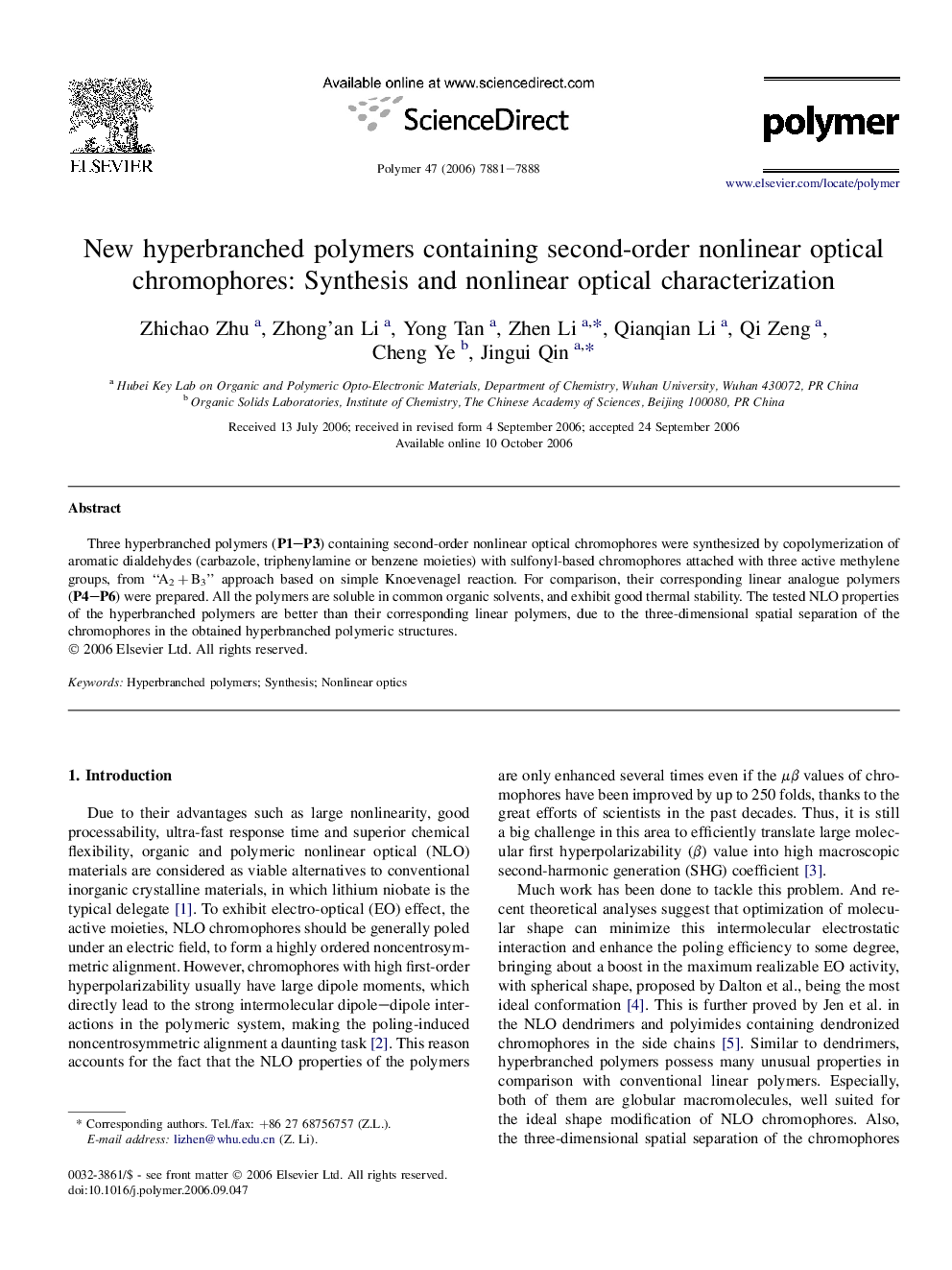| Article ID | Journal | Published Year | Pages | File Type |
|---|---|---|---|---|
| 5188679 | Polymer | 2006 | 8 Pages |
Abstract
Three hyperbranched polymers (P1-P3) containing second-order nonlinear optical chromophores were synthesized by copolymerization of aromatic dialdehydes (carbazole, triphenylamine or benzene moieties) with sulfonyl-based chromophores attached with three active methylene groups, from “A2Â +Â B3” approach based on simple Knoevenagel reaction. For comparison, their corresponding linear analogue polymers (P4-P6) were prepared. All the polymers are soluble in common organic solvents, and exhibit good thermal stability. The tested NLO properties of the hyperbranched polymers are better than their corresponding linear polymers, due to the three-dimensional spatial separation of the chromophores in the obtained hyperbranched polymeric structures.
Related Topics
Physical Sciences and Engineering
Chemistry
Organic Chemistry
Authors
Zhichao Zhu, Zhong'an Li, Yong Tan, Zhen Li, Qianqian Li, Qi Zeng, Cheng Ye, Jingui Qin,
